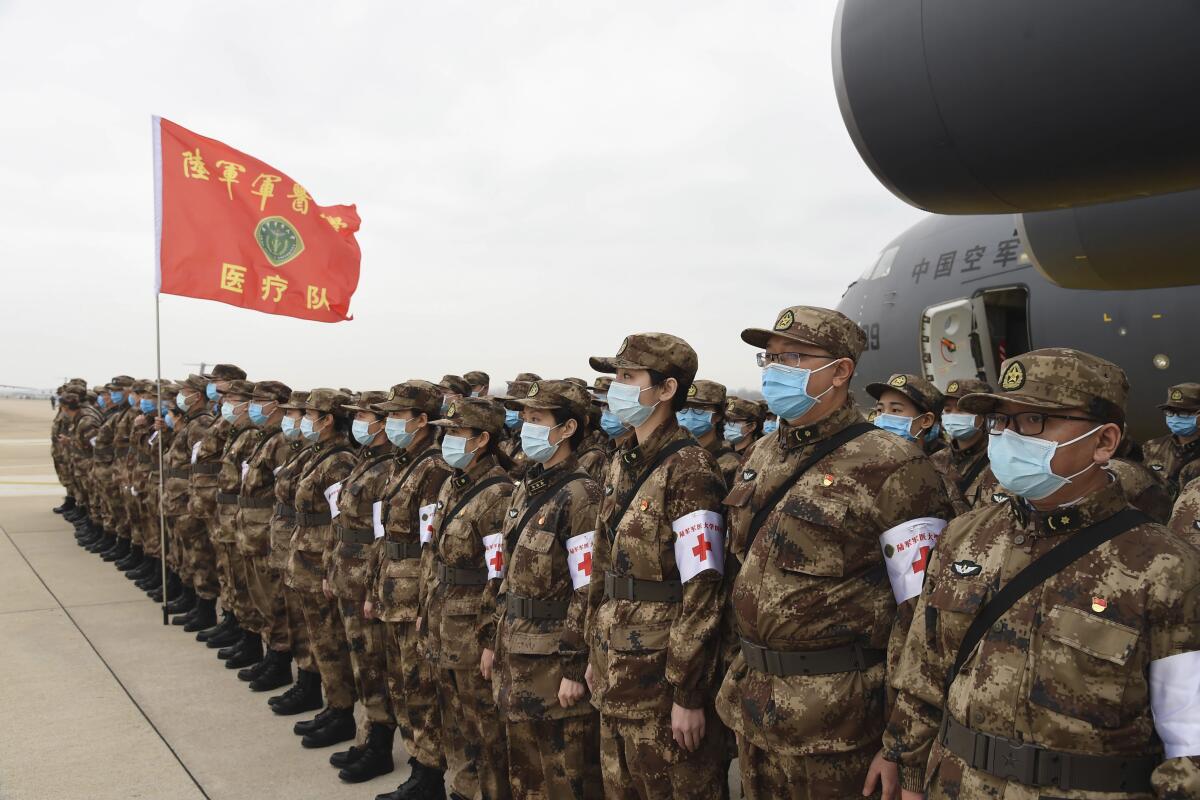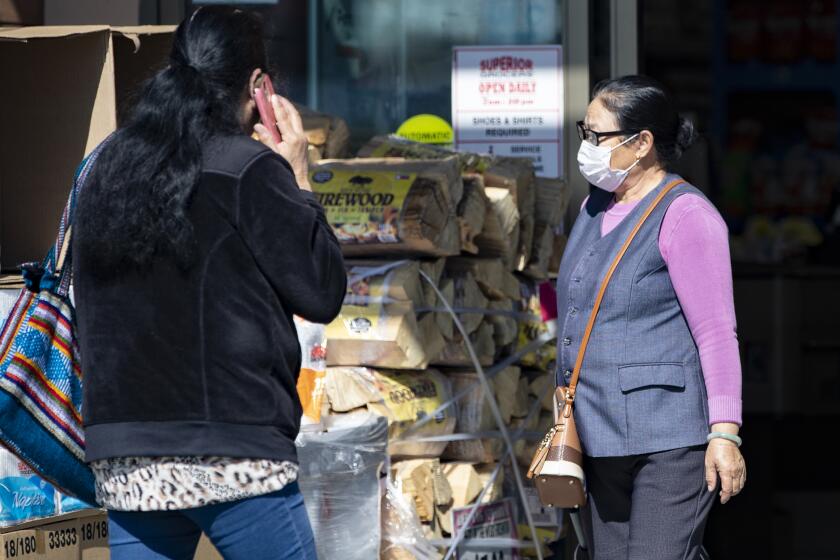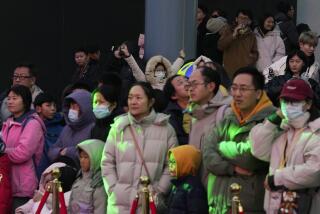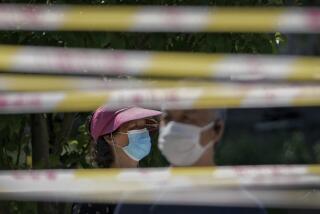Coronavirus cases rise as experts question China’s numbers

BEIJING — Infections and deaths from a new virus in China ballooned for a second straight day Friday, on paper at least, as officials near the epicenter of the outbreak struggled to keep up with a backlog of patients’ lab work.
The acceleration in cases was not necessarily an indicator of a surge in the illness known as COVID-19 because the hardest-hit province of Hubei and its capital of Wuhan changed the way it counted cases. But public health experts wrestled with what exactly could be deduced from the numbers, given the shift in approach.
“If you change the way you count cases, that obviously confounds our capacity to draw firm conclusions about the effectiveness of the quarantine,” said Dr. William Schaffner, an infectious disease expert at Vanderbilt University. “We have to interpret the numbers with great caution.”
Confirmed cases of the virus rose to 63,851 in mainland China, an increase of 5,090 from a day earlier, according to the National Health Commission. The death toll stood at 1,380, up 121.
Still, the World Health Organization continued to report lower numbers, standing by the way cases were counted before Hubei’s shift. The WHO pressed for more details Friday on the change in tabulating cases. Doctors in Hubei are now making diagnoses based on symptoms, patient history and chest X-rays instead of waiting for laboratory confirmation.
“We’re seeking further clarity on how clinical diagnoses are being made to ensure other respiratory illnesses including influenza are not getting mixed into the COVID-19 data,” said the WHO director-general, Tedros Adhanom Ghebreyesus.
Meanwhile, the vulnerability of health workers responding to the epidemic was crystalized with other data emerging from China. More than 1,700 medical workers in China have contracted COVID-19 and six have died, according to the health commission, which said it was “highly concerned” by the infections.
The WHO echoed that, with Tedros saying more information was needed on when the workers were infected and under what circumstances. Transmissions to front-line health workers can signal problems in infection control policies and signal that a disease is becoming more easily transmissible.
Schaffner said he was optimistic that China’s unprecedented quarantines — putting 60 million people in its hardest hit cities under lockdown — would help reduce transmissions. But without consistent numbers, he said, it was hard to draw any such conclusion.
As scientists hunt for an effective drug to treat thousands of patients sickened by a new respiratory virus, they are trying some surprising remedies.
“China and the world community would like to restore a sense of normalcy but in order to do that we need to have confidence in what is going on and we’re not there yet,” Schaffner said.
China has come under intense criticism within the country for its response to the crisis and has been the target of complaints from elsewhere too. But the WHO’s chief of emergencies, Dr. Michael Ryan, defended China’s handling of the outbreak and its cooperation with others.
“From our perspective, we have a government that’s cooperating with us, that’s inviting in international experts, that’s shared sequences with the world, that continues to engage with the outside community,” he said.
The vast majority of cases are in China, but reverberations from the outbreak were felt around the world, with hundreds of infections reported elsewhere.
More than 580 cases have been confirmed outside mainland China. There have been three fatalities, in the Philippines, Hong Kong and Japan.
More to Read
Sign up for Essential California
The most important California stories and recommendations in your inbox every morning.
You may occasionally receive promotional content from the Los Angeles Times.











